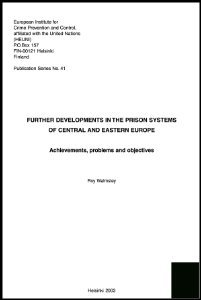By Richard Walton
Prisons exist to keep the public safe by depriving the most serious offenders of their liberty, and to enable them to become law-abiding citizens. In recent years, those priorities increasingly have been neglected by the Ministry of Justice and Her Majesty’s Prisons and Probation Service. The collective rights of the vast majority of the public have been overlooked, without noticeable benefit to those who have been sentenced to prison. The case of Usman Khan, who launched an Islamist terror attack in central London in November, despite being released on supposedly strict licence conditions, illustrates the inherent risks of an approach that appears to set poorly researched offender rehabilitation programmes above the safety of ordinary citizens. This is especially true in the context of extremist offenders, who are ideologically motivated and more difficult, sometimes impossible, to rehabilitate. Khan, previously convicted for involvement in a plot to bomb the London Stock Exchange, hoodwinked his supervisors, who allowed him to travel to the heart of the capital, with fatal consequences for two young people and their families. This should not have happened: the process that led to it has to be re-examined. It is clear that a reordering of priorities for ministers, officials, police and probation officers is urgently required. The alleged terrorist attack at HMP Whitemoor, which is said to have featured replica suicide vests, is further evidence that the most dangerous offenders are not being monitored effectively and in the public interest – even within a Category A prison. This report sets out some of the organisational changes that would help to achieve the necessary change.The recommendation for the Home Office to reabsorb Her Majesty’s Prisons and Probation Service (HMPPS) is persuasive. The Ministry of Justice, formed in 2007, has proven to be institutionally flawed and a cultural timidity still persists among officials around the management of terrorist offenders. The 13-year experiment, which removed prisons from the purview of the Home Office, has failed and should be brought to a close. It would make far more sense – in operational and strategic terms – for the Home Secretary, who has ministerial responsibility for domestic security, policing and public safety, to be once again accountable for the management of all prisoners, with the assistance of an able and knowledgeable Prisons Minister. A Home Office structured along traditional lines would also be in a stronger position to direct information-sharing and more carefully assess the risks to public safety posed by prisoners – notably terrorist offenders – on their release. A revamped Home Office must review how prisoner behaviour is evaluated, as well as the schemes designed to deradicalise terrorist offenders and rehabilitate other dangerous offenders. As the report explains, there has been little empirical study into the effectiveness of schemes designed to challenge extremist world views. Specialist training is vital here, and the use of the best psychological and neurological techniques to assess risk and danger. This is not work for the generalist: as Usman Khan’s case shows, those who are ideologically motivated of Islamist extremism are capable of hiding their true intent for long periods in order to carry out devastating acts of violence. Finally, legislating to prevent seriously dangerous convicted terrorists and possibly some other dangerous offenders from being released early into the community on licence is an idea that deserves serious consideration (and properly informed debate in both Houses of Parliament). It is likely to gain public support but judges must be persuaded of its legal integrity too. As the Government explores these legislative changes and structural changes in the round, it must ensure that public safety is paramount.
London: PolIcy Exchange, 2020. 28p.




















